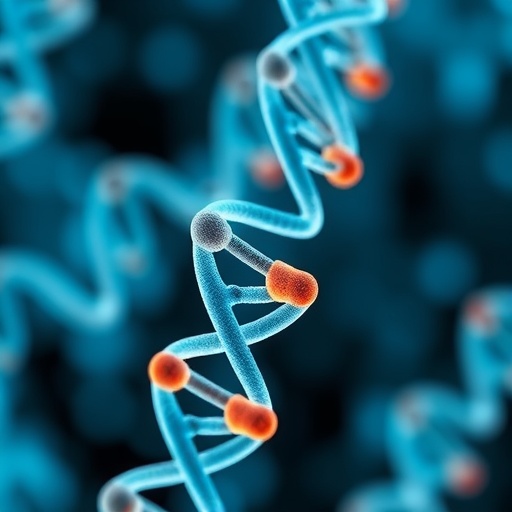In the intricate world of forensic science, the ability to accurately identify body fluids at crime scenes plays a pivotal role in reconstructing events and ultimately delivering justice. Recent advancements have spotlighted RNA markers as a transformative tool in forensic body fluid analysis, promising unprecedented specificity, stability, and insights into genetic polymorphism. This breakthrough ushers in a new era where minute biological traces can unveil critical information about the nature of evidence previously shrouded in uncertainty.
Traditional forensic methods for body fluid identification often rely on presumptive chemical tests or microscopic examination, which, while useful, are limited in specificity and can sometimes produce ambiguous results. Enter RNA-based markers: molecular signatures that not only identify the fluid type with great precision but also offer stability under various environmental conditions, making them ideal for forensic applications. These markers exploit the unique gene expression patterns inherent in different body fluids, providing a robust, species-specific profile that enhances forensic interpretation.
A key challenge that forensic scientists have faced is the delicate and transient nature of RNA molecules, which were once thought to degrade too rapidly to serve as reliable forensic tools. However, recent technological strides have demonstrated that specific RNA transcripts can persist in forensic samples longer than previously assumed, thanks to protective mechanisms within cells and extracellular vesicles. This stability paves the way for RNA to be harnessed effectively in real-world crime scene investigations, even when samples are compromised or aged.
The study by Liu and colleagues elucidates the multifaceted application of RNA markers, focusing on three critical aspects: specificity, stability, and polymorphism. Specificity refers to the unique expression profiles of RNA in distinct bodily fluids—such as blood, saliva, semen, and vaginal secretions—which can be accurately differentiated using these biomarkers. This precision reduces the likelihood of false positives and enhances confidence in forensic conclusions.
Furthermore, the research delves into the stability of RNA markers under various environmental exposures, including heat, humidity, and microbial activity. Their findings confirm that certain RNA transcripts exhibit remarkable resilience, retaining forensic utility where DNA or protein markers might degrade. This characteristic extends the temporal window during which forensic samples remain informative, a significant advantage in criminal cases with delayed evidence collection.
Polymorphism introduces another fascinating dimension, highlighting how variations in RNA sequences among individuals can be leveraged to enhance forensic discrimination. By analyzing RNA polymorphisms—variations in the RNA sequences themselves—investigators can combine fluid identification with individual genetic signatures, potentially linking evidence directly to specific persons. This dual capability advances the forensic toolkit beyond mere fluid detection to a more conclusive probative value.
The integration of these RNA markers into forensic workflows promises to revolutionize practices by improving both the sensitivity and specificity of body fluid detection. With standardization and validation, forensic laboratories can employ multiplexed assays that simultaneously analyze panels of RNA markers, enabling comprehensive profiling from minimal sample quantities. This multiplexing enforces redundancy and cross-verification, bolstering result reliability.
Moreover, the application of cutting-edge technologies such as next-generation sequencing (NGS) facilitates in-depth analysis of RNA molecules, unraveling complex expression patterns and polymorphic traits. NGS platforms can decipher low-abundance transcripts and capture the heterogeneity within samples, offering granular insights that transcend conventional forensic methods. This high-resolution approach propels forensic biology into the genomics age.
Nonetheless, the forensic community must surmount challenges related to the interpretation of RNA data, as environmental and postmortem factors can influence RNA expression profiles. Establishing robust interpretation guidelines, error rates, and statistical frameworks is imperative to translate RNA forensic results into courtroom admissibility. Collaborative efforts among forensic scientists, molecular biologists, and legal experts will be crucial in this endeavor.
Advancing beyond laboratory research, field validation studies involving diverse crime scene samples under various conditions are essential to demonstrate RNA markers’ operational utility. Comprehensive databases compiling RNA expression and polymorphism data from global populations will enhance the applicability and fairness of forensic analyses, minimizing biases and ensuring equitable justice outcomes.
The implications of this research extend beyond forensic science, potentially benefiting medical diagnostics, anthropology, and biological research domains. Understanding the specificity and stability of RNA in bodily fluids can inform biomarker discovery, pathogen detection, and even lineage tracing studies. The interdisciplinary appeal of these findings underscores the transformative potential of RNA technologies.
Public awareness and acceptance of RNA marker applications in forensic contexts will also influence their integration into criminal investigations. Transparent communication about the scientific principles, capabilities, and limitations of RNA forensic analysis will foster trust among stakeholders, including law enforcement, judiciary bodies, and the general public.
As Liu et al. emphasize, the journey from molecular discovery to forensic utility necessitates meticulous standardization, validation, and training. Developing straightforward, reliable protocols ensures reproducibility and error minimization in forensic laboratories worldwide. Investment in training and infrastructure will equip forensic professionals to harness the full potential of RNA markers.
In conclusion, the application of RNA markers in forensic body fluid analysis represents a revolutionary leap toward more accurate, stable, and genetically insightful evidence interpretation. This innovative approach addresses long-standing challenges in forensic biology, promising enhanced specificity and a novel dimension of individualization through polymorphism. As this technology matures and integrates into forensic practice, it holds the promise of elevating the precision of criminal investigations and strengthening the foundations of justice.
Subject of Research: RNA markers in forensic body fluid analysis
Article Title: Application of RNA markers in forensic body fluid analysis: from specificity and stability to polymorphism
Article References:
Liu 刘志勇, Z., Wu, R., Li, H. et al. Application of RNA markers in forensic body fluid analysis: from specificity and stability to polymorphism. Int J Legal Med (2025). https://doi.org/10.1007/s00414-025-03656-2
Image Credits: AI Generated
DOI: https://doi.org/10.1007/s00414-025-03656-2




